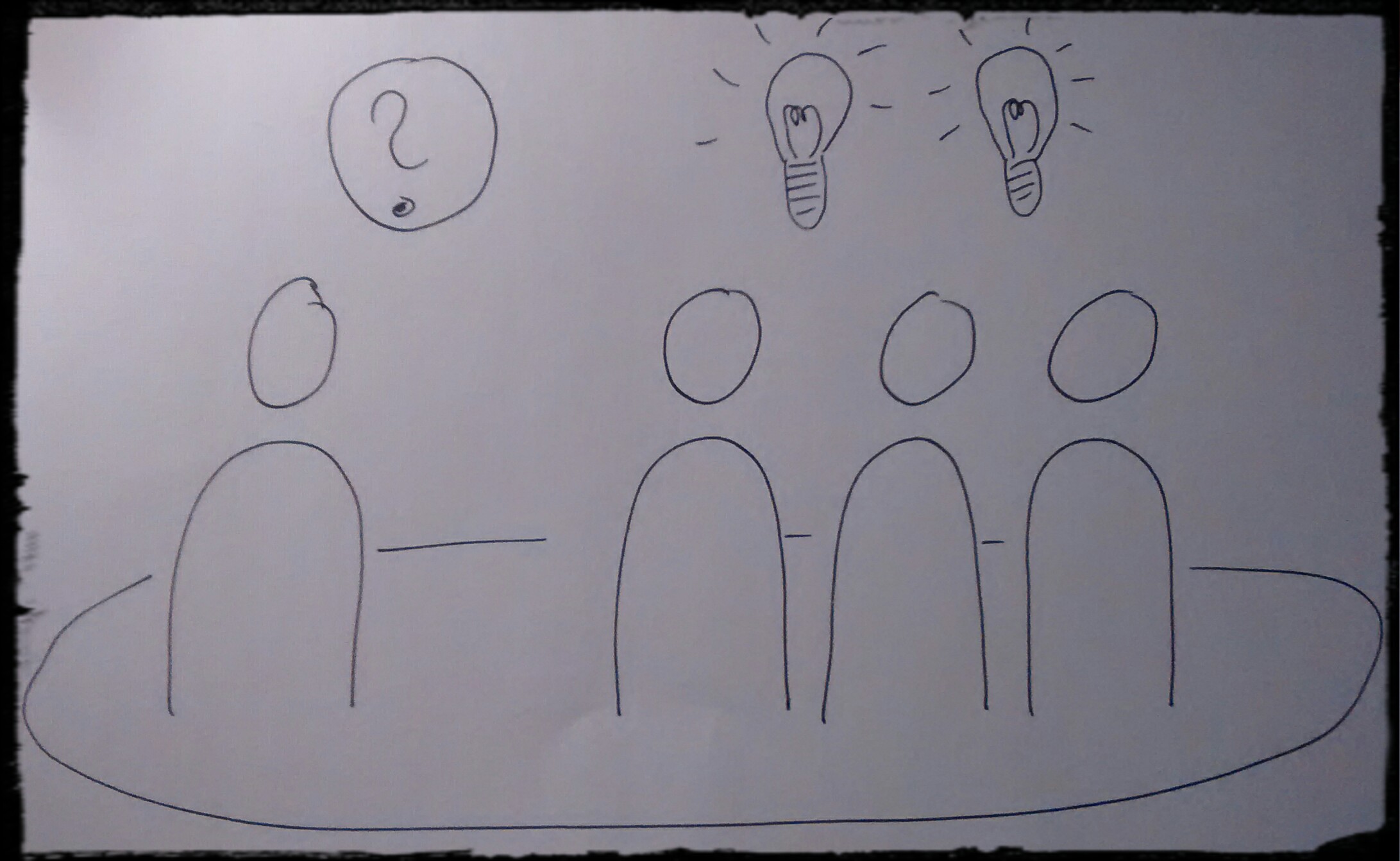Case-based coaching and reflection among agile colleagues
This year in October I was fortunate to be part of the Coach Reflection Day (CoRe Day) in Karlsruhe. It was a day filled with impressions, new ideas, shared experiences and great input. I’d like to share one of these impulses with you. This blogpost is an english version of my original German one. Deborah Hartmann Preuss has asked me to translate it to english (*) and to be honest I feel proud to contribute a tiny part to the international endeavour.
So this blog post is about Intervision. Some of you may already know the term supervision which is well-known here in Germany but perhaps less so in North America; there is no clear definition but basically it is about one or more supervisors coaching and advising a team or an individual, with a clear mandate for doing so. Intervision is also intended for reflecting on situations (cases) from one’s own professional setting – but it takes place as a kind of coaching between peers. So there is no supervisor (with more knowledge/experience or giving advice) and no “supervised” participants; just professional people “intervising” each other.
David Schmithüsen and Michael Mahlberg from Cologne hosted a session at CoRe Day Karlsruhe where they presented the format for intervision they use and also shared the experiences they’ve had so far. Following are my notes.
Prerequisites for a successful intervision session
- participants share no common working context
- everything said remains confidential among participants (sometimes also called ‘the Las Vegas rule’)
- 3-5 participants per intervision group (one case provider and 2-4 observers)
- a 30-40 minute timebox
Rough intervision schedule
- The case provider outlines the case. (duration: 7.5 minutes)
- The observers each share max. 2 observations they made during step 1, observations referring either to the case itself or to the case provider (while he/she described the case).
- The case provider chooses one of the observations from step 2 and elaborates on this deeper or shares everything that comes to his/her mind with regard to the chosen observation.
- Repeat steps 2 and 3.
- Short closing reflection within the whole group.
Experiences
Usually Michael and David “tackle” exactly 2 cases within one two-hour evening session with their agile fellows in Cologne. After the 1st case there is a short break for everyone.
It is important to notice that the 1st case is no longer open for discussion, neither during the break nor within the 2nd case’s session.
Another really important element is that all participants of one intervision group truly do not share a common working context.
Which experiences or ideas do you have when it comes to participating in or initiating an intervision group? You are warmly invited to share your thoughts here any time.
—
[*] Thanks a lot to Deb for polishing my english translation so that it reads so super smooth now.
